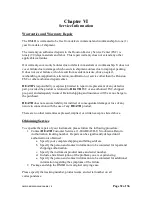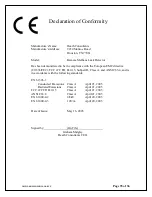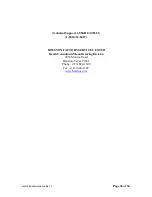
Page 26 of 36
101515-0 RMLD MANUAL REV
F
Dealing with False Detections
While using the DMD mode, several conditions may occur that will cause the algorithm
to give a detection indication. The most common situations are:
•
Abrupt or jerky motions causing the scanning distance to rapidly change.
•
Overly strong returns due to strong reflectors.
The most common point that a false detection occurs is in the 50 ft (15 m) range. This is
due to the beam footprint becoming very large. Abrupt motion, change in terrain, or
distance to an object may cause the DMD to give a short low detection. To verify if the
detection is due to a leak, pause at this distance, aim off to the side and re-sweep across
the area to determine if gas is present.
Scanning from a long range to a short range will also minimize false detections.
Strong reflections off certain types of surfaces (e.g., black garbage bags, water droplets,
glass, polished surfaces, stones, license plates, reflectors, etc.) may give a false detection.
Rescan the area from a slightly different angle.
How Does the RMLD Measure Gas?
With the RMLD it is now possible to survey areas that are hard to reach or not easily
accessible. The RMLD does not have to be within the gas plume because it uses laser
technology known as Tunable Diode Laser Absorption Spectroscopy. As the laser passes
through a gas plume, the methane absorbs a portion of the light, which the RMLD then
detects. This technology makes it possible to detect leaks along the sight line without
always having to walk the full length of the service line.
Infrared
Detector
Laser
Fig. 4-3
The invisible Infrared (IR) detector laser beam is transmitted from the launch port. With
a normal background, such as brick, concrete, and grass, it has a maximum distance of up
to 100 ft. away (actual distance may vary due to surface condition).













































